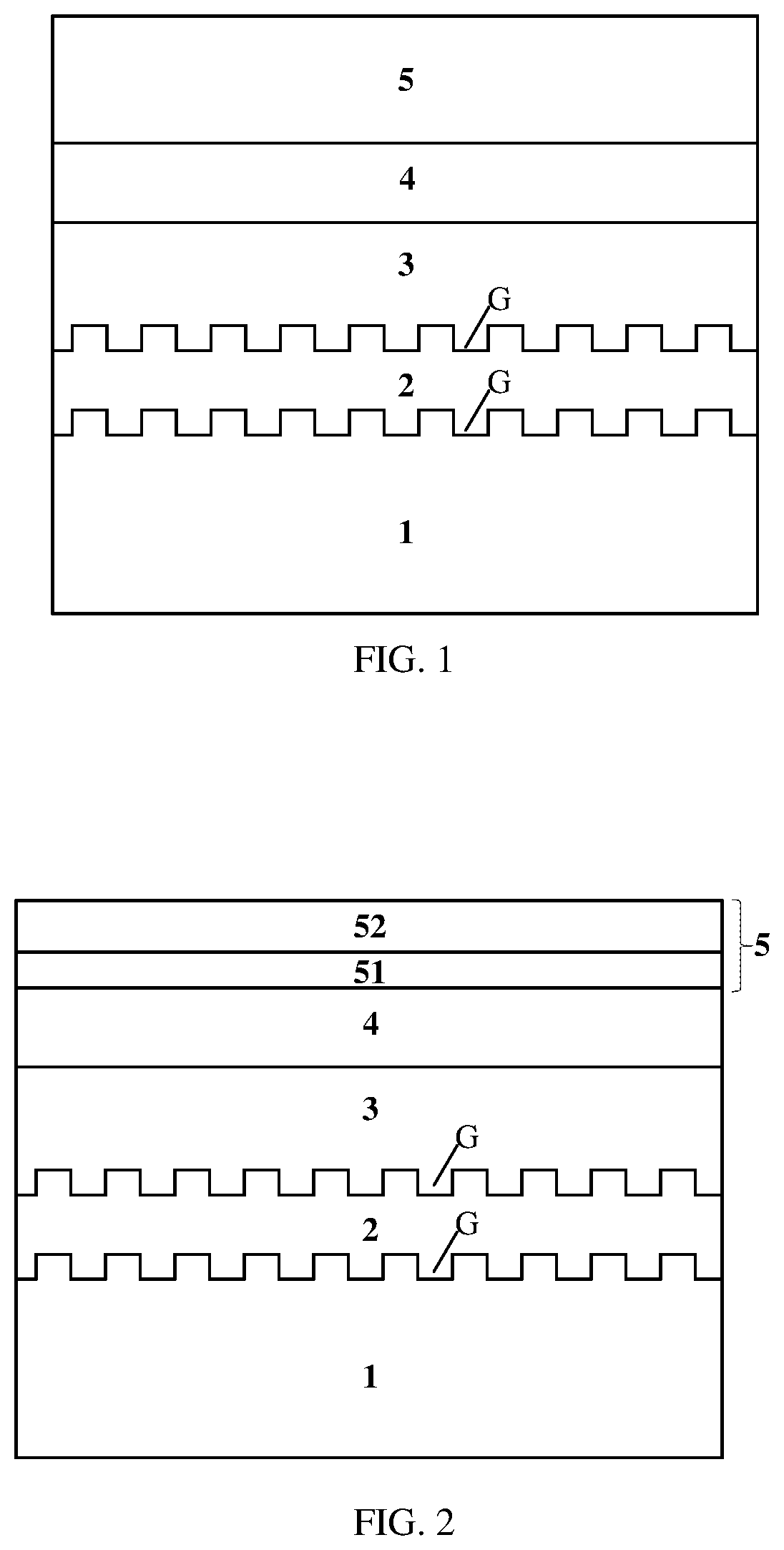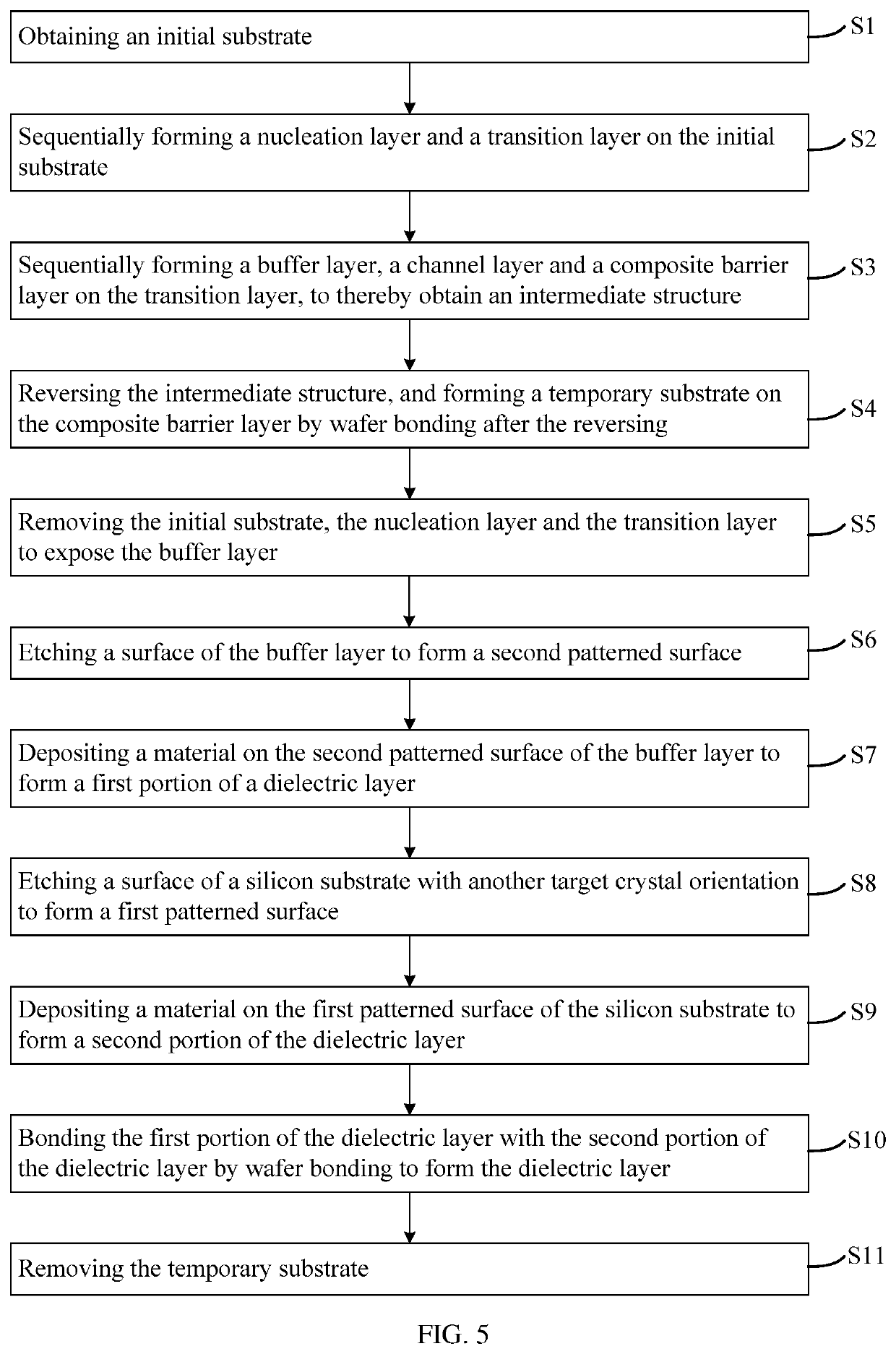Material structure for low thermal resistance silicon-based gallium nitride microwave and millimeter-wave devices and manufacturing method thereof
- Summary
- Abstract
- Description
- Claims
- Application Information
AI Technical Summary
Benefits of technology
Problems solved by technology
Method used
Image
Examples
embodiment 1
[0044]Referring to FIG. 1, and FIG. 1 is a schematic structural view of a material structure for low thermal resistance silicon-based GaN microwave and millimeter-wave devices according to the disclosure. The material structure for low thermal resistance silicon-based GaN microwave and millimeter-wave devices includes: a silicon substrate 1, a dielectric layer 2 of high thermal conductivity, a buffer layer 3, a channel layer 4 and a composite barrier layer 5.
[0045]The dielectric layer 2 is disposed on (for example, in contact with) the upper surface of the silicon substrate 1, and an uneven first patterned interface is formed between the dielectric layer 2 and the silicon substrate 1. The buffer layer 3 is disposed on (for example, in contact with) the upper surface of the dielectric layer 2, and an uneven second patterned interface is formed between the buffer layer 3 and the dielectric layer 2. The channel layer 4 is disposed on (for example, in contact with) the upper surface of ...
embodiment 2
[0068]On the basis of the above embodiment 1, this embodiment provides a manufacturing method of a material structure for low thermal resistance silicon-based GaN microwave and millimeter-wave devices.
[0069]Referring to FIG. 5 and FIGS. 6a-6t, and FIG. 5 is a schematic flowchart of the manufacturing method of a material structure for low thermal resistance silicon-based GaN microwave and millimeter-wave devices, and FIGS. 6a-6t are schematic structural views associated with a process of the manufacturing method of a material structure for low thermal resistance silicon-based GaN microwave and millimeter-wave devices. The manufacturing method may include steps as follows.
[0070]S1, obtaining an initial substrate 11. A material of the initial substrate 11 may be a silicon base with a target crystal orientation, as shown in FIG. 6a.
[0071]The illustrated embodiment uses the silicon base with the target crystal orientation as the initial substrate 11, and the silicon base is a high resis...
PUM
 Login to View More
Login to View More Abstract
Description
Claims
Application Information
 Login to View More
Login to View More - R&D
- Intellectual Property
- Life Sciences
- Materials
- Tech Scout
- Unparalleled Data Quality
- Higher Quality Content
- 60% Fewer Hallucinations
Browse by: Latest US Patents, China's latest patents, Technical Efficacy Thesaurus, Application Domain, Technology Topic, Popular Technical Reports.
© 2025 PatSnap. All rights reserved.Legal|Privacy policy|Modern Slavery Act Transparency Statement|Sitemap|About US| Contact US: help@patsnap.com



